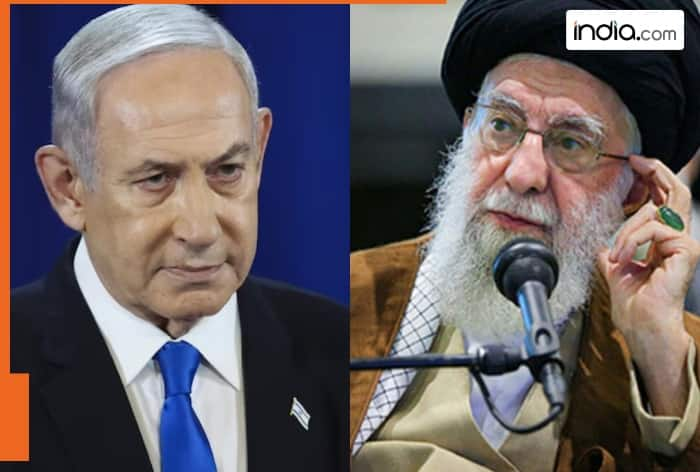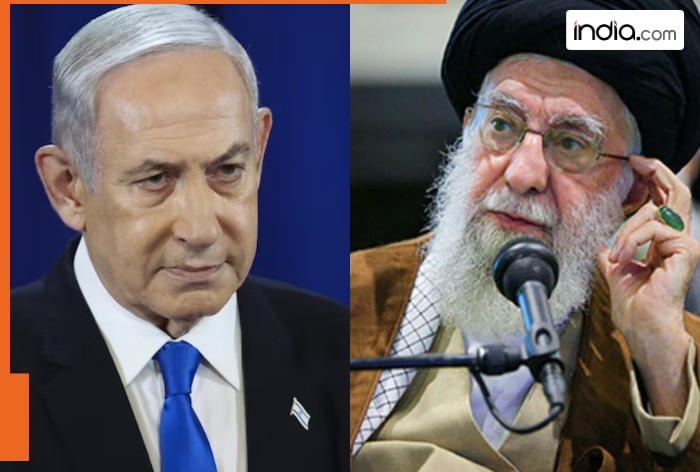Israel could attack uranium enrichment facilities in Natanz, say US officials.

New Delhi: Exactly one year ago on October 7, 2023, Palestine’s militant outfit Hamas attacked and invaded southern Israel. They killed more than 1200 Israeli and other countries’ citizens and took more than 250 hostages.
Israel retaliated soon and bombarded the Gaza Strip while other militant groups like Hezbollah, the Iraqi Resistance, and the Houthis opened fronts on Israel. These groups are called “Axis of Resistance” and are allegedly set up, mentored, funded, trained, and backed fully by Iran.
Israel attacks Iranian embassy in Damascus, Syria
Using the multi-pronged as the trigger, Israel conducted an airstrike on the Iranian embassy complex in Damascus, Syria on April 1, 2024, destroying the building housing its consular section. Sixteen people were killed in the strike, including eight officers of the Islamic Revolutionary Guard Corps (IRGC). The attack on the embassy building was deemed as a direct attack on Iran, as per international laws.
When Iran did the unimaginable
Twelve days later, on April 13, 2024, the unthinkable happened as Iran launched dozens of drones and missiles on Israel in what it termed as an act of retaliation. It was called “Operation True Promise”. It was the first time that the Persian country attacked Israel directly from its soil with 170 drones, 30 cruise missiles, and 120 ballistic missiles.
This was followed by a nerve-racking time as the world waited for Israel’s counterattack, most probably on Iran’s nuclear sites, which are believed to be located across several locations in the country.
Iranian president Ebrahim Raisi and Hamas chief Ismail Haniyeh
Things kept simmering while Ebrahim Raisi, the eighth president of Iran died in a helicopter crash on May 19, 2024. It was speculated that Israel’s spy agency Mossad was behind the crash.
Ismail Haniyeh, the chairman of the Hamas Political Bureau, died in an airstrike on July 31, 2024, in Tehran, where he was attending the inauguration of the newly elected President of Iran Masoud Pezeshkian. Again, the needle of suspicion pointed to Israel. What made this event more intense and antagonistic was the fact that Ismail Haniyeh’s alleged assassination was carried out in Iran’s capital Tehran on the occasion of the inauguration of the newly elected President of Iran.
Hassan Nasrallah, major embarrassment for Iran
It was the assassination of Hassan Nasrallah, the secretary-general of Hezbollah on 27 September 2024 that led to the second direct attack by Iran on Israel on October 1 and the former launched about 400 ballistic missiles at Israeli targets. The missile attack was codenamed Operation True Promise 2 as Iran claimed that the attack was an act of self-defence and in retaliation for Israel’s assassinations of Hamas leader Ismail Haniyeh in Tehran, Hezbollah leader Hassan Nasrallah, and IRGC general Abbas Nilforoushan.
October 7 attacks anniversary
Now, on the first anniversary of the Hamas attack on Israel, the whole world is waiting with bated breath for the Israeli retaliation against Iran, which is speculated and believed to target Iran’s nuclear sites.
Iran has always maintained that its nuclear programme is not aimed at seeking nuclear weapons. It now has a stock of highly enriched uranium that could be converted to weapons-grade fuel for at least three bombs in a time frame ranging from a few days to a few weeks, according to a report by The Washington Post.
International Atomic Energy Agency (IAEA), the United Nations’ supervisory body says that Iran is enriching uranium to up to 60% fissile purity, close to 90% of weapons-grade, at two sites. In theory, it has enough material enriched to that level, if further enriched, for almost four bombs.
Iran’s nuclear plants and their locations
Natanz: It is located on a plain outside the city of Qom, south of Tehran. It has two plants, the underground Fuel Enrichment Plant (FEP) and the above-ground Pilot Fuel Enrichment Plant (PFEP). Iran houses centrifuges at Natanz. The FEP was built to be able to accommodate 5,000 centrifuges. Reports say that about 14,000 centrifuges are currently installed there out of which 11,000 are in operation and refining uranium to up to 5% purity.
Israel could attack uranium enrichment facilities in Natanz, according to US officials as quoted by The New York Times.
Fordow: This plant is located opposite Qom and is dug into a mountain to protect it from potential bombardment. Currently, it has more than 1,000 centrifuges operating and Iran recently doubled the number of centrifuges at Fordow.
Isfahan: Isfahan is Iran’s second-largest city and it has a large nuclear technology centre that includes the Fuel Plate Fabrication Plant (FPFP) and the uranium conversion facility (UCF) that can process uranium into the uranium hexafluoride that is fed into centrifuges. This facility builds uranium metal, a process that is particularly proliferation-sensitive since it can be used to devise the core of a nuclear bomb.
Khondab: It is a heavy-water research reactor, originally called Arak. Heavy-water reactors pose a nuclear proliferation risk because they can easily produce plutonium which, like enriched uranium, can be used to make the core of an atom bomb.
Bushehr: Iran’s only operating nuclear power plant on the Gulf Coast uses Russian fuel that Russia then takes back when it is spent, reducing the proliferation risk.

